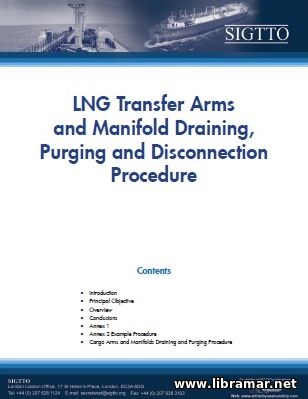 The first introductory part of this SIGTTO-released document says that it has been written following numerous reports from the members of the present international organization, on the confusion and misunderstanding noticed between some ship and jetty operators; that is main reason why it has been released and please note that this document mainly pertains to terminals where rigid transfer arms are employed.
The principal objective of this report was to disconnect the arms in such a way that would totally eliminate the possible risks of release of the liquid and, in addition, reduce the release of the cargo vapor to the environment to a practically achievable minimum. In order to safely and timely conduct this operation, it is critically important that a good and carefully thought out procedure has been established and that the communication between people on board and on shore is reliable and permanent, since both of them carry the responsibility for safety during subject operation.
Among the most important aspects covered within this report there are drain system, isolation of valves, liquid removal, purging flammable vapors, verification, disconnection of the cargo manifolds etc. The annexes at the end provide case studies and example procedures...
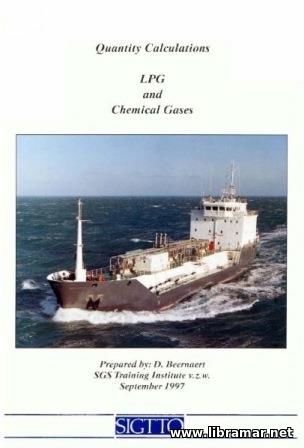 This is the official SIGTTO publication covering one of the most important aspects of the marine transportation of the liquefied gases; their nature requires that same is carried out in closed containers, considering the temperatures and pressures involved. It is therefore critical to properly quantify the transported cargo and this, in turn, will require complex procedures and considerations.
Another item to consider and to add to the complexity is the number of different calculation procedures, each for the specific accuracy level and value. It is essential to have a thorough understanding of the differences between above stated procedure in order to clearly get the values of the loaded and discharged cargo. Recognizing the necessity for a good guidance on these matters, the SIGTTO organization developed and released this second edition of the monograph.
The contents of this book have been fully updated and revised by the recognized experts in the field. The info contained in the monograph will serve as a background to the people working in the shipping organizations, and whose day to day activities involve dealing with the LNG custody transfer. However, it will be equally interested and useful for self-education.
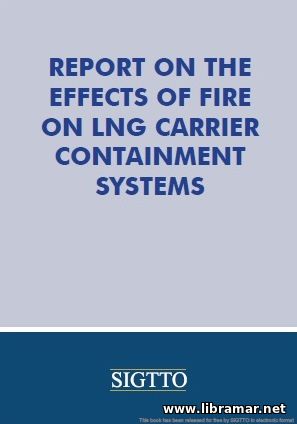 Current LNG transportation practice provides for pressure relief systems, designed with credit for the tank's insulation in order to to prevent gas cargo pressurization due to boil-off and fire, as per IMO IGC Code 8.5. However, it is uncertain to what extent any insulation degradation, in a fire situation, is taken into account in the design of PRV systems.
As foam plastic insulation materials are subject to possible melting, degradation and/or ignition at temperatures lower than might be achieved during such fire exposure, there is concern that the PRV systems may not be capable of relieving the vapor flows that would result from the increased boil-off due to partial or total insulation failure. This SIGTTO publication covers following matters - the origins of the IGC Code, fire scenarios, LNG carrier pressure relief systems, simplified reapplication of the Code for loss of insulation, heat transfer into the tank; time based heat transfer, response of insulation materials to heat, and others.
This is quite useful document providing necessary updates required to be taken into account to organize the transportation, storage and handling of the LNG cargoes in a safe way.
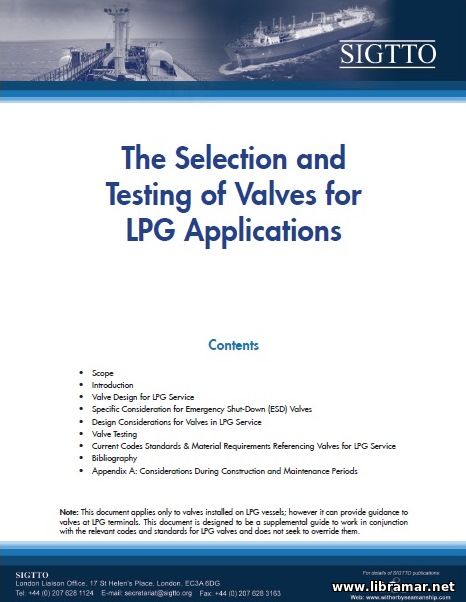 This presentation by SIGTTO applies to the valves installed on board liquid petroleum gas vessels, but it can provide guidance to such valves on LPG terminals, as well. It is intended to serve as a supplemental guide to be used together with the relevant standards and codes for LPG valves and shall not override them.
In this book such an important issues as valve design, specific design consideration for ESD (emergency shutdown) valves, valve testing, material requirements and codes and standards, have been addressed. The publication is mostly intended to provide necessary technical guidance to the designers and/or operators on the applicable general requirements for valves for LPG service, designed for an operating temperature ranging between -55 and +80 degrees Celsius.
Though the document was specifically developed to apply to LPG vessels, the provisions contained in it may be equally applied throughout the liquefied petroleum gas industry. Note, however, that this paper shall not override any national/international standards or codes. The appendix at the last part of the document provides considerations to be taken into account during the periods of construction and maintenance.
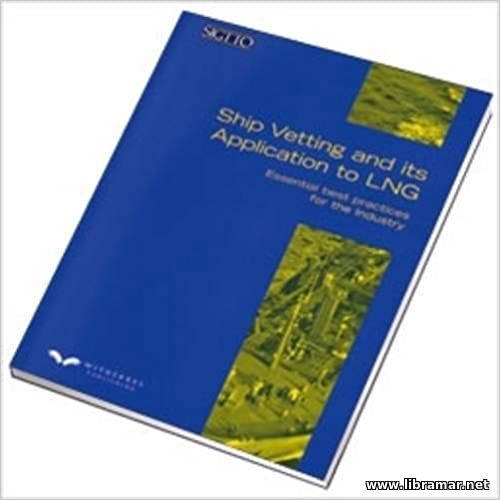 The vetting of the vessels by the charterers, sellers, buyers and all others involved is one of the integral parts of the ship operation. The shipboard incidents such as the fires and collisions, ship grounding, pollution of the marine environment and others, can all have very serious consequences for the owners, operators, ship charterers, owners of the cargo and many others. It shall be noted that the ship owner is considered responsible for the management and quality of the vessel.
But, when using a third-party ship, the charterers, ship buyers/sellers and operators of the terminals get exposed to the certain risks. The present publication was developed and released by SIGTTO in order to explain the ship vetting process and also to cover the specific aspects of vetting on the liquid natural gas carriers. The authors have supplemented the book with the several valuable practices taken from the real shipping companies.
The proper knowledge of all of this information is absolutely necessary for all people engaged in operating the vessel of the LNG type, considering all specifics of the construction and operation. All of the best practices have been covered and duly explained by the recognized industry professionals.
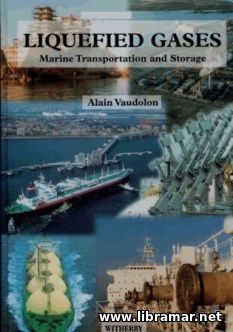 The known and researched world gas reserves exceed those of oil. However, for so many years the gas has not attracted too much interest. It was rather considered a sort of hindrance by the people engaged in the oil recovery. The associated gas used to be flared. The wells containing no oil but a plenty of gas used to be totally ignored. The first practical attempts for gas production were made at the beginning of the last century.
People had finally recognized the potential of gas reserves to change the way of their living. The development of gas reserves has eventually led to the need for its transportation which, noting its flammable nature, should be carried out in a safest way. The present publication provides a good review of the marine LNG transportation as well as of the conditions that prevail today.
Without going too deep into technical details of the transportation, the author gives a nice overview of all important aspects including the characteristics of the vessels engaged in transportation, current regulations and rules governing it, gas storage ashore and of course safety considerations. The readers will find valuable information about everything associated with marine transportation of gas from both safety, technical and commercial perspectives.
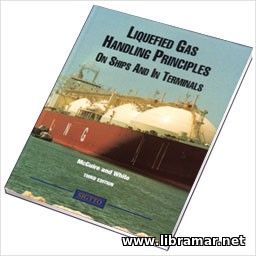 This latest edition of the textbook published by McGuire and White was published by Witherby in 2000 and covers following important aspects of the liquefied gases transportation and handling, as properties and basic information on liquefied gases, ship equipment and instrumentation, principles of gas carrier design, terminal equipment and instrumentation, the ship-shore interface, cargo measuring and control, cargo handling operations, emergency procedures and personal health-and-safety issues.
This publication has been initially established as the standard guide covering the operational side of the shipping industry; the book should be treated as the completely independent companion that is to be used in the course of the professional training for the operational qualifications. As it was a case with two previous editions of the textbook, it is dealing with the issues related to the safe handling of liquefied gases in bulk and emphasized the importance of proper understanding of physical characteristics of such cargoes with regard to the practical operation of the associated equipment on board vessels and at terminals. It is primarily intended to be used by the ship officers and other people bearing responsibility for the operations.
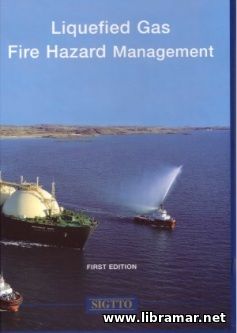 An excellent publication released by the world respected SIGTTO organization. As it is clear from the title, the content of the volume is intended to provide necessary information and instructions on the fire hazard management on board ships transporting liquefied gases. The authors have managed to bring together, in one informative volume, the main principles of preventing and fighting the fires associated with liquefied gas.
The volume is mainly aimed at the operational staff including ship officers and plant supervisors since they are directly engaged in the handling of the liquefied gases that are very flammable. However, we would highly recommend it to the fire officers as well as to the emergency planners - they will be provided with a good professional insight into both technical design and practical operation of the liquefied gas installations together with all equipment considered fundamental for safe and efficient operation of those installations.
Numerous real life case histories make the content of the publication even more readable. In short, we can say that the authors have managed to cover absolutely all important aspects of the topic, and this approach has gained worldwide popularity to their work which is deservedly treated as one of the best books on the subject. The analysis of the famous incidents, such as the propylene fire on board Val Rosandra and attack on Gas Fountain, and others.
|







